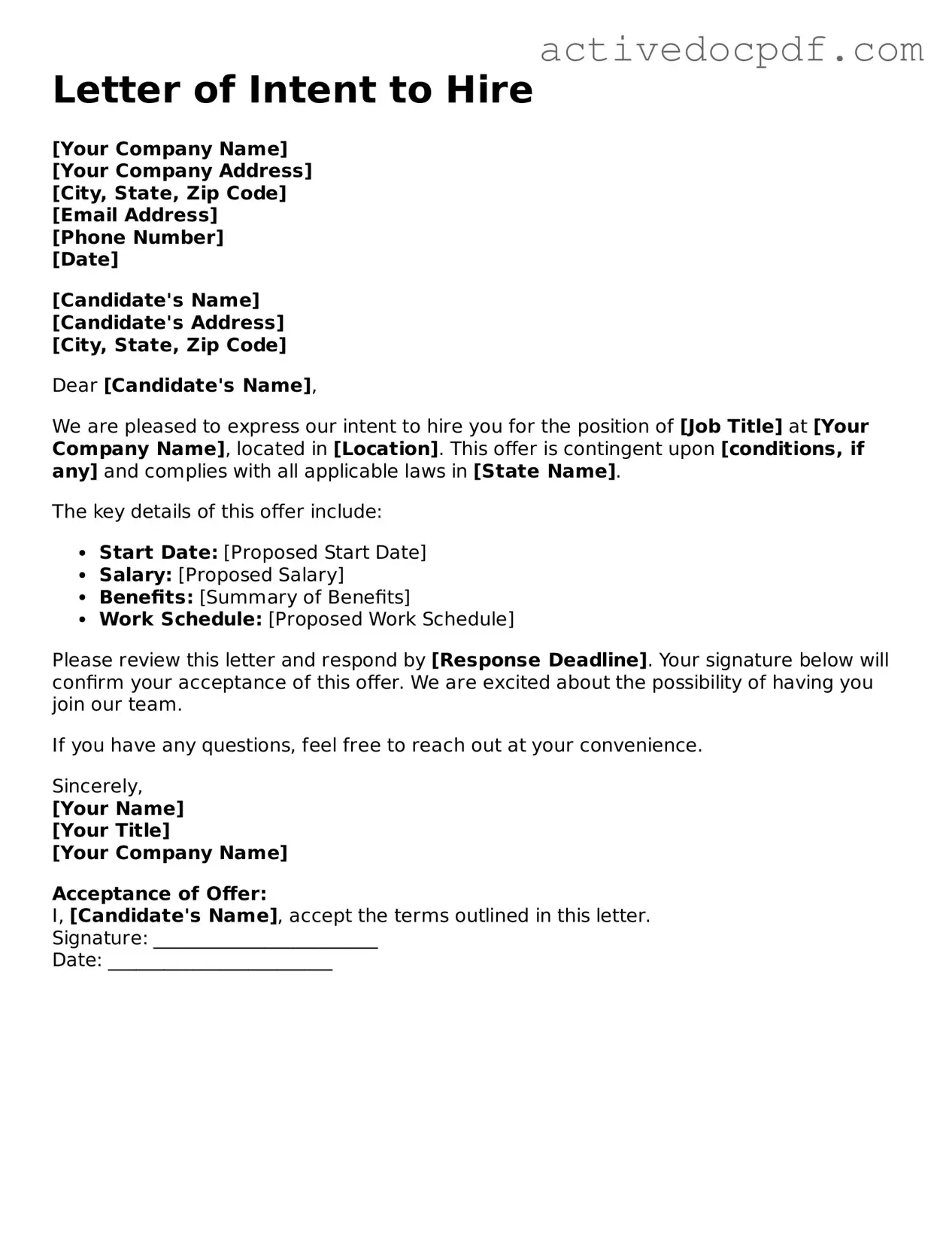What is a Letter of Intent to Hire?
A Letter of Intent to Hire is a document that outlines the preliminary agreement between an employer and a potential employee. It expresses the employer's intention to hire the individual, detailing key terms of employment, such as job title, salary, and start date. While it is not a legally binding contract, it serves as a formal step in the hiring process, indicating that both parties are moving forward.
Why should I use a Letter of Intent to Hire?
Using a Letter of Intent to Hire can provide clarity for both the employer and the candidate. It helps set expectations and ensures that both parties are on the same page regarding important details. Additionally, it can help prevent misunderstandings later in the hiring process. By documenting the intentions and agreements, it creates a reference point for both sides.
A well-crafted Letter of Intent to Hire should include the following information:
-
The name and contact information of both the employer and the candidate.
-
The job title and a brief description of the position.
-
The proposed salary and any benefits that will be offered.
-
The expected start date and any conditions that must be met prior to employment.
-
A statement indicating that the letter is not a binding contract but an expression of intent.
Is a Letter of Intent to Hire legally binding?
No, a Letter of Intent to Hire is generally not considered a legally binding contract. It is meant to outline the intentions of both parties without creating enforceable obligations. However, it is important to be clear in the language used to avoid any confusion about the nature of the agreement.
How should I deliver the Letter of Intent to Hire?
The Letter of Intent to Hire can be delivered in several ways. Common methods include:
-
Email: Sending a PDF version of the letter is quick and efficient.
-
In-person: Presenting the letter during a meeting can add a personal touch.
-
Postal mail: For a more formal approach, mailing a printed copy can be appropriate.
What should I do after sending the Letter of Intent to Hire?
After sending the letter, it is advisable to follow up with the candidate to confirm receipt and address any questions they may have. Once both parties are in agreement, the next step is typically to prepare a formal employment contract. This contract will include all the details discussed in the Letter of Intent to Hire and will be legally binding.
